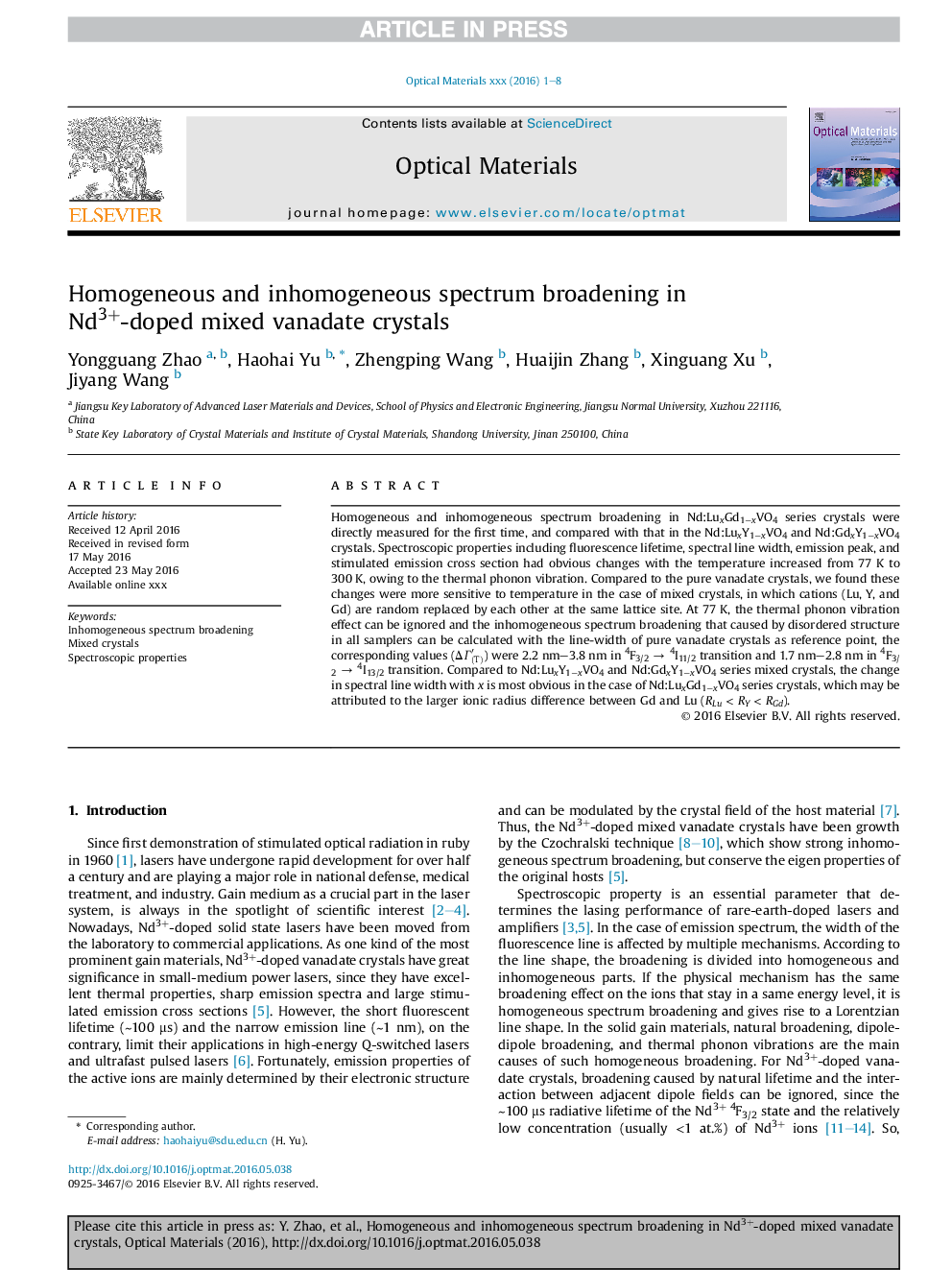| Article ID | Journal | Published Year | Pages | File Type |
|---|---|---|---|---|
| 5442549 | Optical Materials | 2017 | 8 Pages |
Abstract
Homogeneous and inhomogeneous spectrum broadening in Nd:LuxGd1âxVO4 series crystals were directly measured for the first time, and compared with that in the Nd:LuxY1âxVO4 and Nd:GdxY1âxVO4 crystals. Spectroscopic properties including fluorescence lifetime, spectral line width, emission peak, and stimulated emission cross section had obvious changes with the temperature increased from 77 K to 300 K, owing to the thermal phonon vibration. Compared to the pure vanadate crystals, we found these changes were more sensitive to temperature in the case of mixed crystals, in which cations (Lu, Y, and Gd) are random replaced by each other at the same lattice site. At 77 K, the thermal phonon vibration effect can be ignored and the inhomogeneous spectrum broadening that caused by disordered structure in all samplers can be calculated with the line-width of pure vanadate crystals as reference point, the corresponding values (ÎÎ(T)â²) were 2.2 nm-3.8 nm in 4F3/2 â 4I11/2 transition and 1.7 nm-2.8 nm in 4F3/2 â 4I13/2 transition. Compared to Nd:LuxY1âxVO4 and Nd:GdxY1âxVO4 series mixed crystals, the change in spectral line width with x is most obvious in the case of Nd:LuxGd1âxVO4 series crystals, which may be attributed to the larger ionic radius difference between Gd and Lu (RLu < RY < RGd).
Related Topics
Physical Sciences and Engineering
Materials Science
Ceramics and Composites
Authors
Yongguang Zhao, Haohai Yu, Zhengping Wang, Huaijin Zhang, Xinguang Xu, Jiyang Wang,
